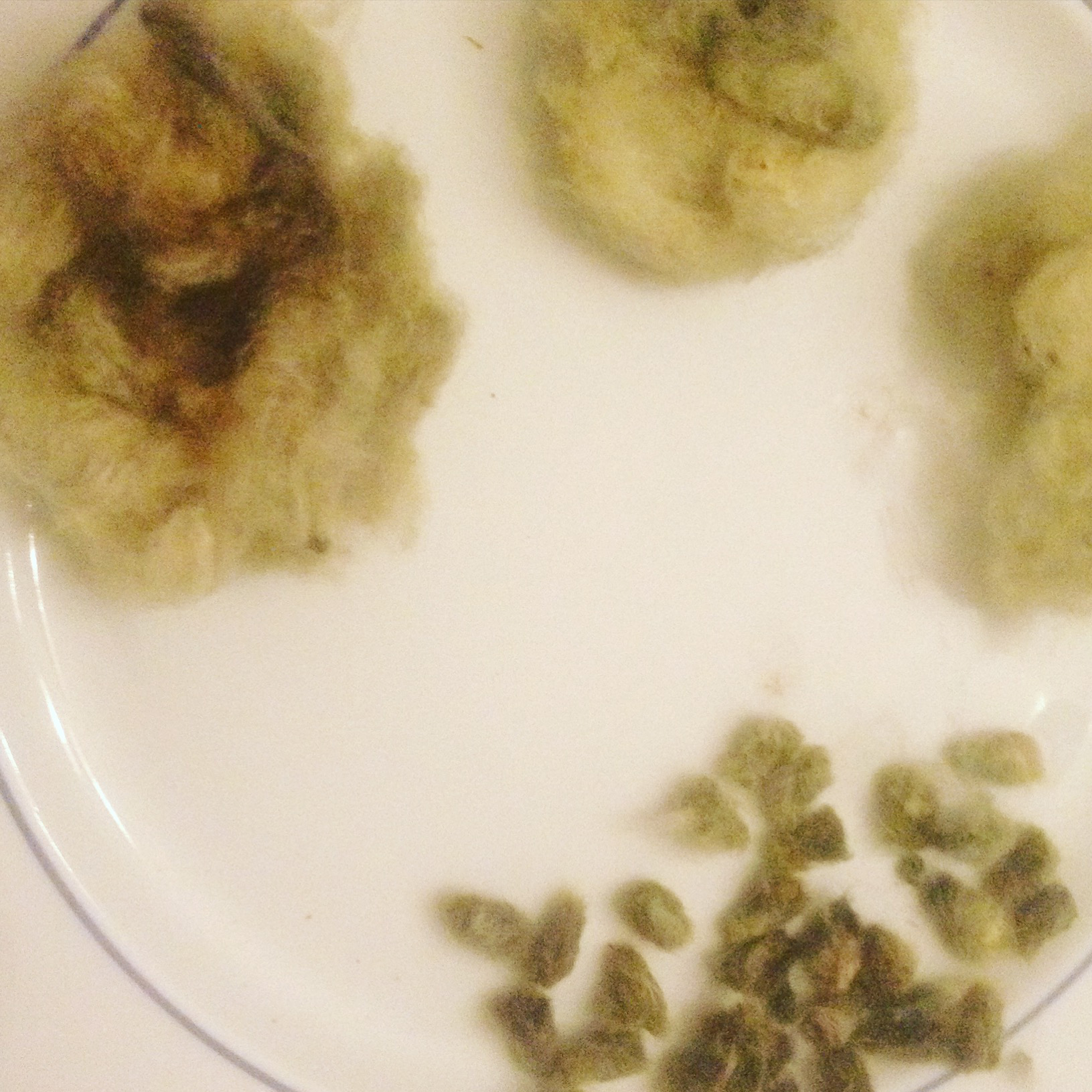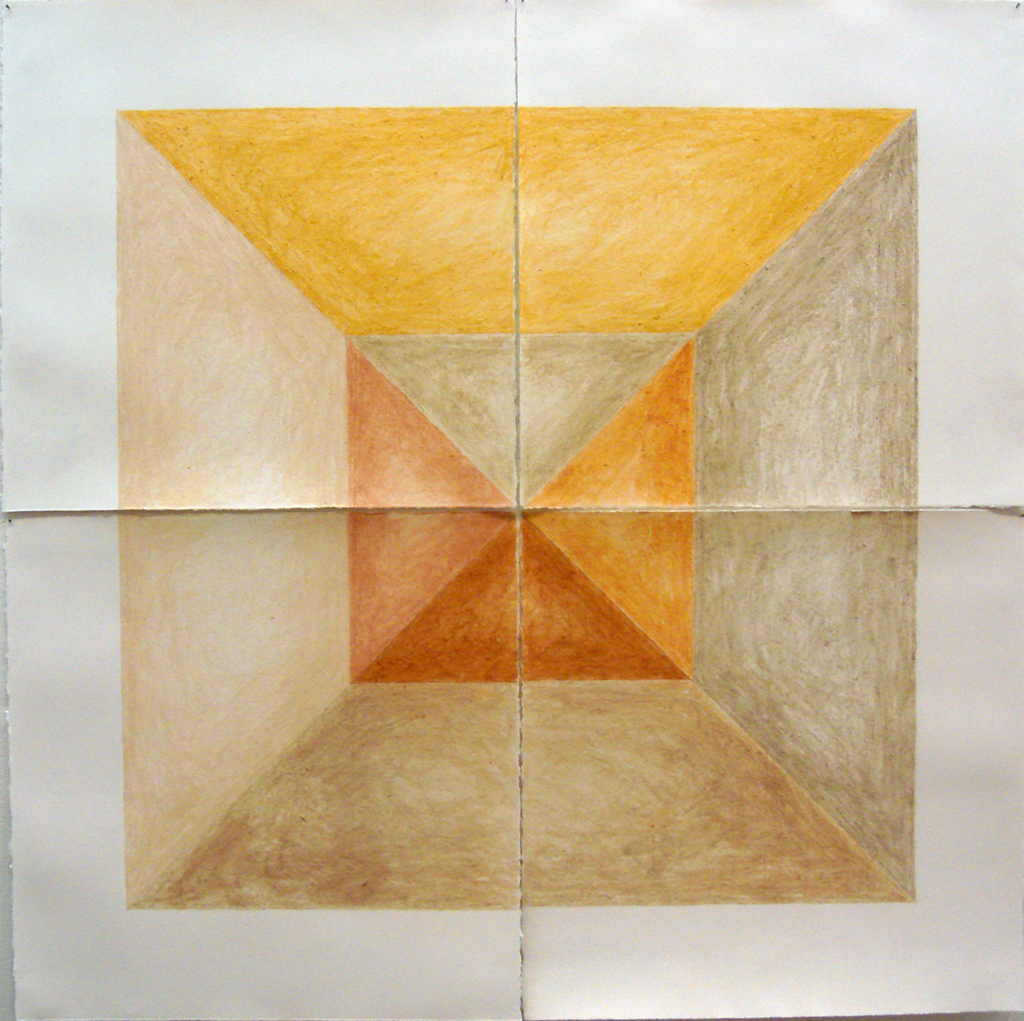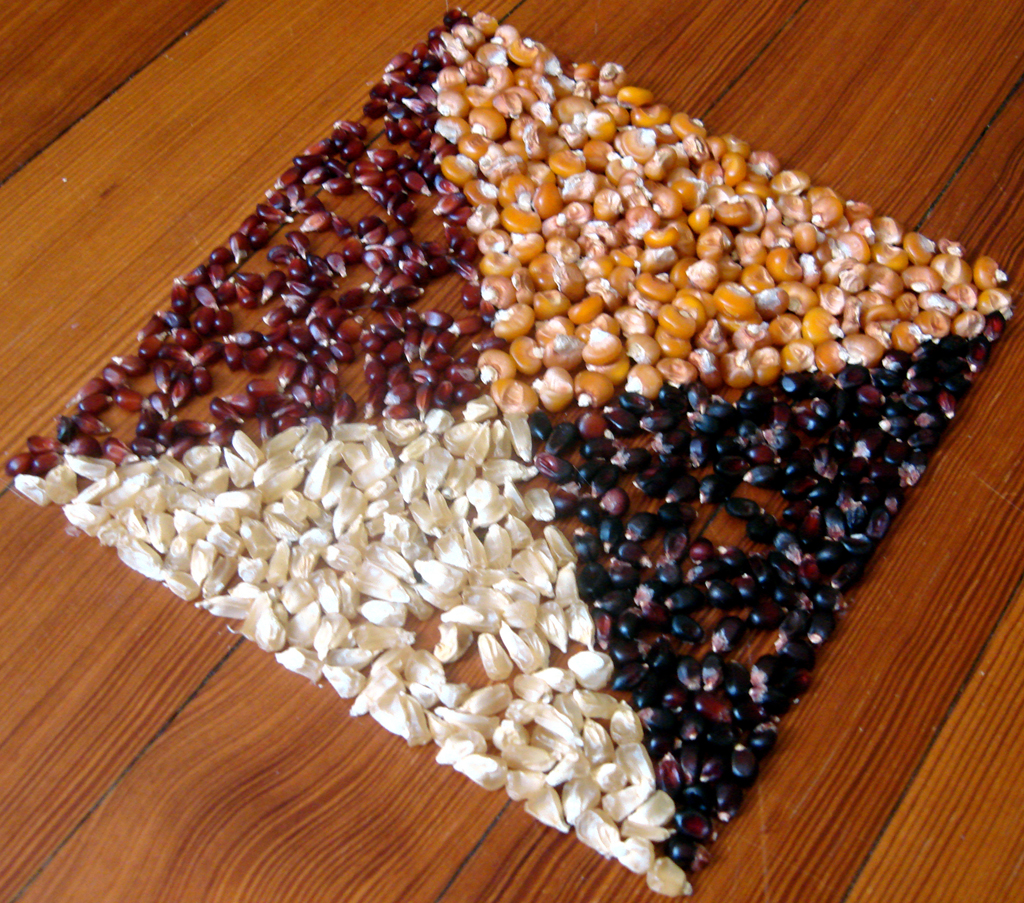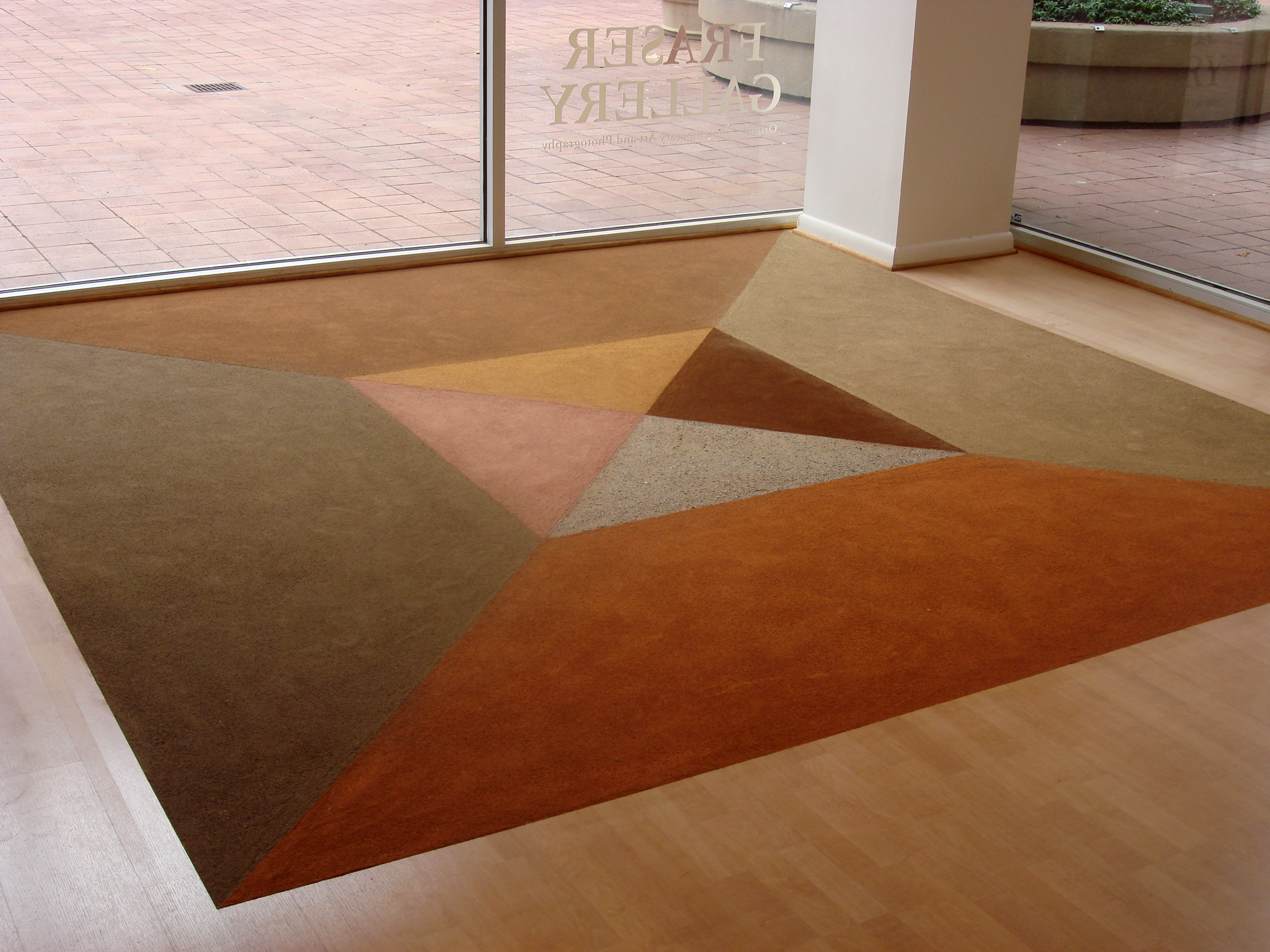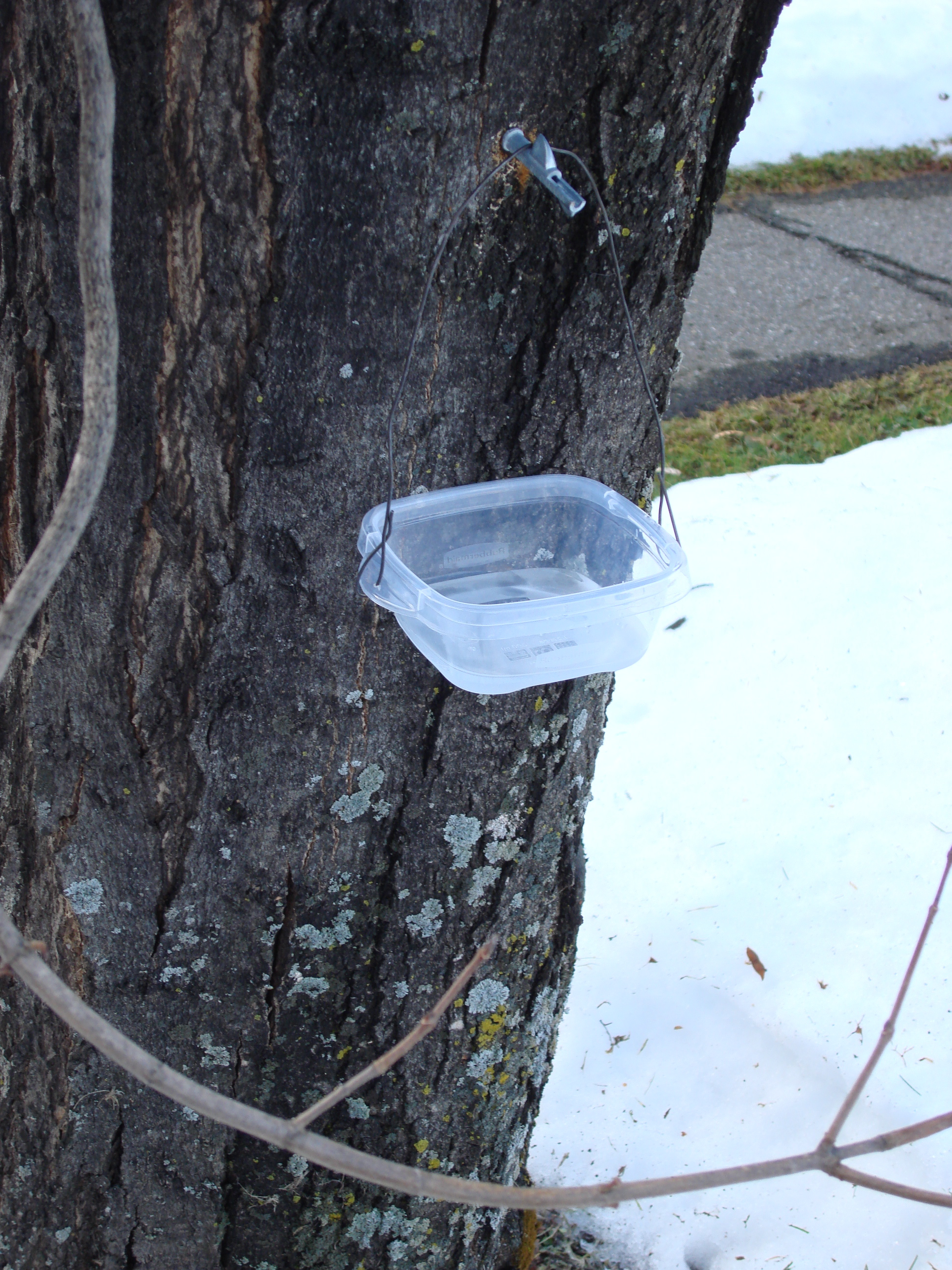Work samples
-
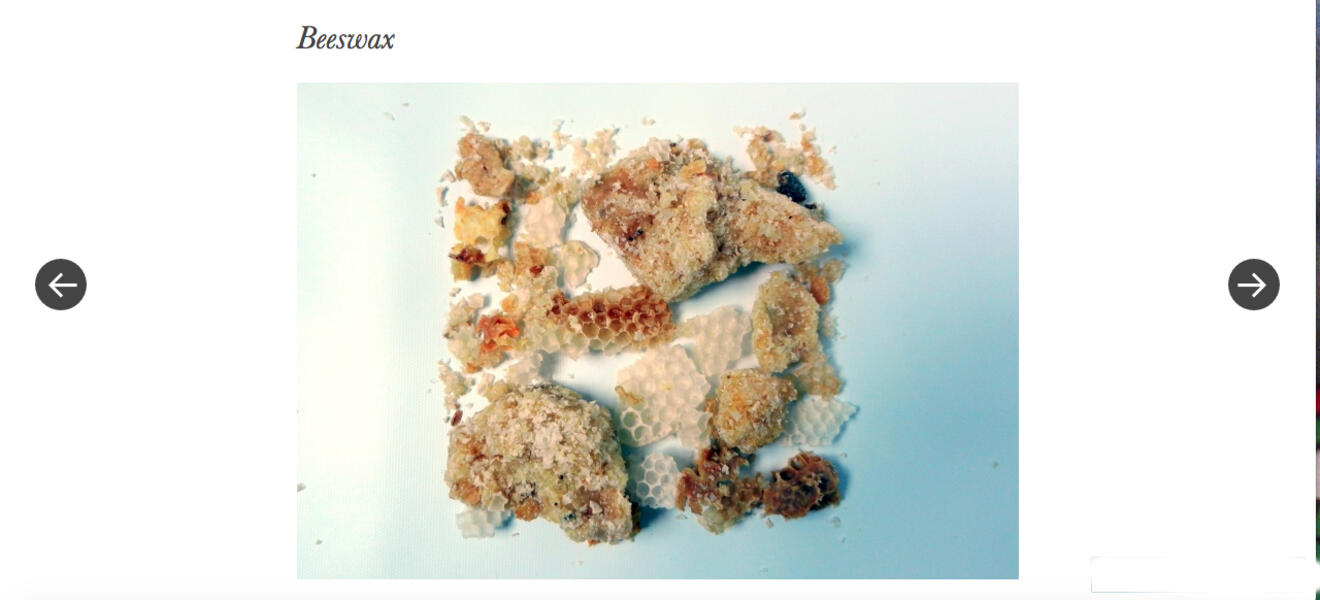 BeeswaxI have been paralyzed with indecision about where to start. So I just did. A beekeeper friend gave me some of the wax he scrapes off his hives and beeswax should be fairly simple to process. It is. But then I started making a list of all the tools I used in the process. I melted the wax in a double boiler and strained it through a few layers of cheesecloth. Simple enough right? So what do I now need to reverse engineer? I used a cooking vessel, a glass jar, a waxed paper mold (milk carton) cheesecloth, scissors and a heat source. So I started researching cheesecloth. Turns out no one makes it anymore and I can't find much of anything about it. It's loosely woven fabric made from cotton. So I planted some cotton. Cheesecloth sells for a few dollars in most stores, I can't help but think about how long it's going to take me to make even a small amount. Pretty sure I'm not going to want to strain bug guts through it. I'll also use some cotton to make the waxed paper for the mold since my other fiber of choice abaca is tropical and not something I could realistically grow. And we're off.
BeeswaxI have been paralyzed with indecision about where to start. So I just did. A beekeeper friend gave me some of the wax he scrapes off his hives and beeswax should be fairly simple to process. It is. But then I started making a list of all the tools I used in the process. I melted the wax in a double boiler and strained it through a few layers of cheesecloth. Simple enough right? So what do I now need to reverse engineer? I used a cooking vessel, a glass jar, a waxed paper mold (milk carton) cheesecloth, scissors and a heat source. So I started researching cheesecloth. Turns out no one makes it anymore and I can't find much of anything about it. It's loosely woven fabric made from cotton. So I planted some cotton. Cheesecloth sells for a few dollars in most stores, I can't help but think about how long it's going to take me to make even a small amount. Pretty sure I'm not going to want to strain bug guts through it. I'll also use some cotton to make the waxed paper for the mold since my other fiber of choice abaca is tropical and not something I could realistically grow. And we're off. -
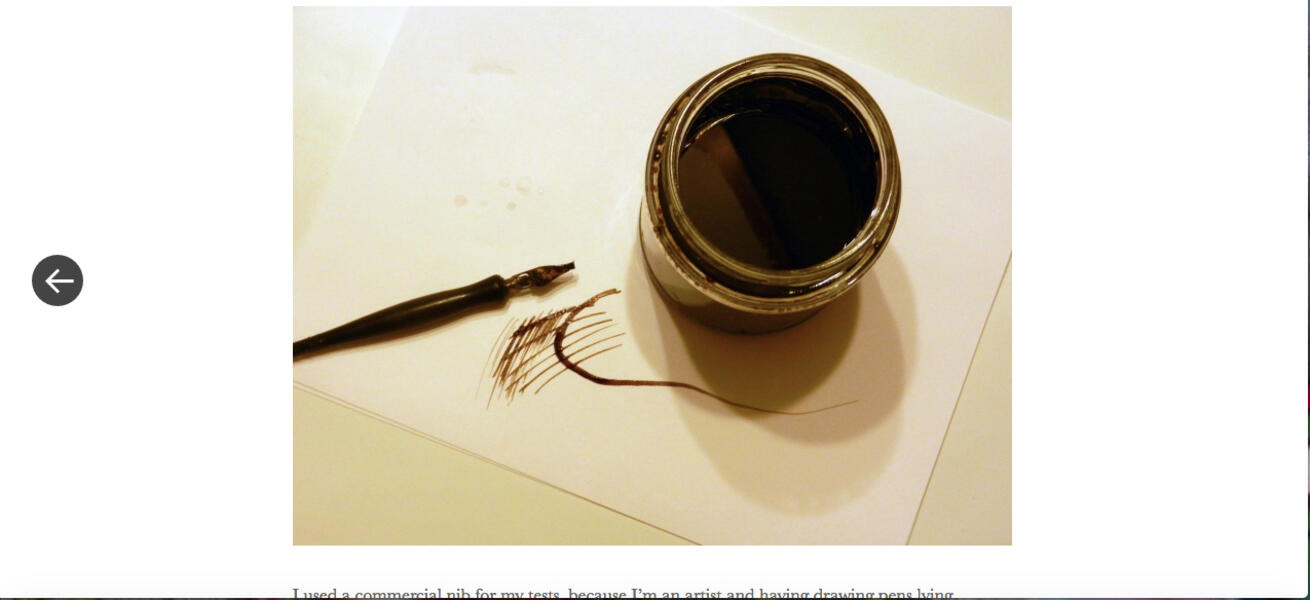 Black Walnut InkWriting materials seemed like another logical early project. So I started with Black Walnut ink because I have a black walnut tree. I researched a ton about gall ink too, but as of yet haven't been able to find any oak galls. I dehusked the walnuts, dried them and then simmered them in some water for a few hours. A few months later I strained the liquid (cheesecloth again... or a sieve?) into a glass jar and added a bit of rubbing alcohol to stop it from getting stinky. So the list of things used in this process: a hammer, a vessel, heat source, glass, a sieve, alcohol, a pen, paper.
Black Walnut InkWriting materials seemed like another logical early project. So I started with Black Walnut ink because I have a black walnut tree. I researched a ton about gall ink too, but as of yet haven't been able to find any oak galls. I dehusked the walnuts, dried them and then simmered them in some water for a few hours. A few months later I strained the liquid (cheesecloth again... or a sieve?) into a glass jar and added a bit of rubbing alcohol to stop it from getting stinky. So the list of things used in this process: a hammer, a vessel, heat source, glass, a sieve, alcohol, a pen, paper.
About Jessie
Reverse Engineering from Scratch
Reverse Engineering from Scratch is a multi disciplinary project that I have been working on in some capacity for several years. Much of my previous work involves making materials “from scratch” if you browse the drawings project below you will see that I make my own charcoal, pastels and paper. I became really interested in the idea of something being “from scratch” and what that meant. All of these projects involved vessels, tools and electricity, none of which I made and all of which rely heavily on modern conveniences. At the same time there is a kind of cultural ideal that I have noticed more and more recently in my own life and in popular media, an idea about going off into a secluded place and surviving with nothing- truly making things from nothing. This kind of sci-fi apocalyptic disaster preparation fascinates me, both because I think the “prepper” impulse is interesting and because they are often so tied to modern technology that they don't seem to realize it. Case in point canning cars- actually pretty modern technology and something that doesn't work without a part that is manufactured in a factory. (the sealing lid) So I decided I wanted to try and make everything. Starting alone in the woods with nothing didn't seem very practical, so I instead determined to reverse engineer things, letting them get more complicated as time went on. It has quickly become apparent how complicated it gets almost immediately. The idea of lost knowledge is also really interesting to me, the more I read texts about 16 century technology that baffle me, the more I realize that there are very few people who know how to do these things anymore. I chose to document this project with a blog because it lent itself well to step by step documentation and an interconnected web of projects. I also wanted it to very accessible and free to view both in and out of an art context. I expect this project will go indefinitely and hope to involve many more people in my efforts.
-
 BeeswaxI have been paralyzed with indecision about where to start. So I just did. A beekeeper friend gave me some of the wax he scrapes off his hives and beeswax should be fairly simple to process. It is. But then I started making a list of all the tools I used in the process. I melted the wax in a double boiler and strained it through a few layers of cheesecloth. Simple enough right? So what do I now need to reverse engineer? I used a cooking vessel, a glass jar, a waxed paper mold (milk carton) cheesecloth, scissors and a heat source. So I started researching cheesecloth. Turns out no one makes it anymore and I can't find much of anything about it. It's loosely woven fabric made from cotton. So I planted some cotton. Cheesecloth sells for a few dollars in most stores, I can't help but think about how long it's going to take me to make even a small amount. Pretty sure I'm not going to want to strain bug guts through it. I'll also use some cotton to make the waxed paper for the mold since my other fiber of choice abaca is tropical and not something I could realistically grow. And we're off.
BeeswaxI have been paralyzed with indecision about where to start. So I just did. A beekeeper friend gave me some of the wax he scrapes off his hives and beeswax should be fairly simple to process. It is. But then I started making a list of all the tools I used in the process. I melted the wax in a double boiler and strained it through a few layers of cheesecloth. Simple enough right? So what do I now need to reverse engineer? I used a cooking vessel, a glass jar, a waxed paper mold (milk carton) cheesecloth, scissors and a heat source. So I started researching cheesecloth. Turns out no one makes it anymore and I can't find much of anything about it. It's loosely woven fabric made from cotton. So I planted some cotton. Cheesecloth sells for a few dollars in most stores, I can't help but think about how long it's going to take me to make even a small amount. Pretty sure I'm not going to want to strain bug guts through it. I'll also use some cotton to make the waxed paper for the mold since my other fiber of choice abaca is tropical and not something I could realistically grow. And we're off. -
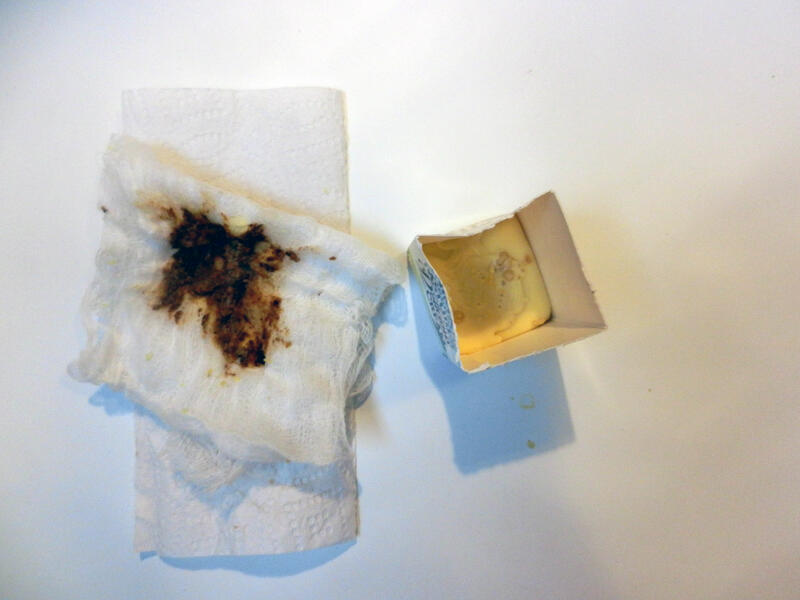 Beeswax and MoldFinished beeswax in the mold with cheesecloth. Turns out no one makes cheesecloth by hand anymore and I can't find much of anything about it. It's loosely woven fabric made from cotton. So I planted some cotton. Cheesecloth sells for a few dollars in most stores, I can't help but think about how long it's going to take me to make even a small amount. Pretty sure I'm not going to want to strain bug guts through it. I'll also use some cotton to make the waxed paper for the mold since my other fiber of choice abaca is tropical and not something I could realistically grow. And we're off.
Beeswax and MoldFinished beeswax in the mold with cheesecloth. Turns out no one makes cheesecloth by hand anymore and I can't find much of anything about it. It's loosely woven fabric made from cotton. So I planted some cotton. Cheesecloth sells for a few dollars in most stores, I can't help but think about how long it's going to take me to make even a small amount. Pretty sure I'm not going to want to strain bug guts through it. I'll also use some cotton to make the waxed paper for the mold since my other fiber of choice abaca is tropical and not something I could realistically grow. And we're off. -
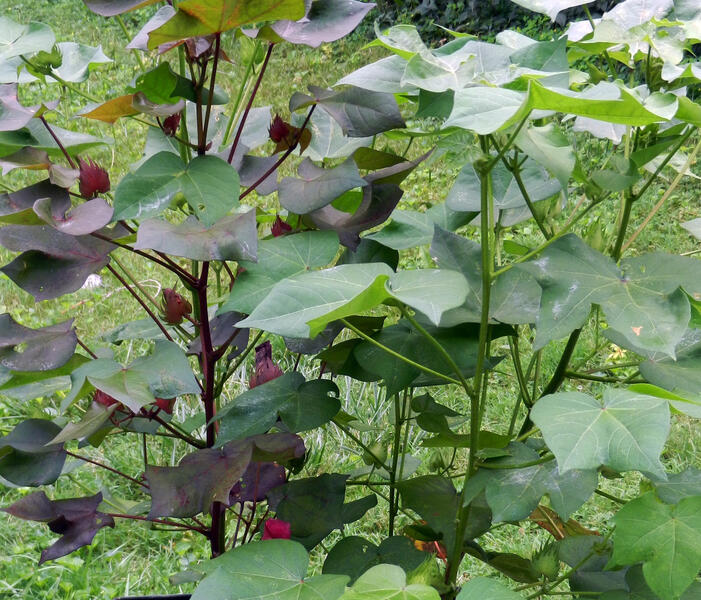 Cotton PlantCotton plants growing. I'll also use some cotton to make the waxed paper for the mold since my other fiber of choice abaca is tropical and not something I could realistically grow.
Cotton PlantCotton plants growing. I'll also use some cotton to make the waxed paper for the mold since my other fiber of choice abaca is tropical and not something I could realistically grow. -
 Cotton and SeedsCotton bolls separated from the seeds
Cotton and SeedsCotton bolls separated from the seeds -
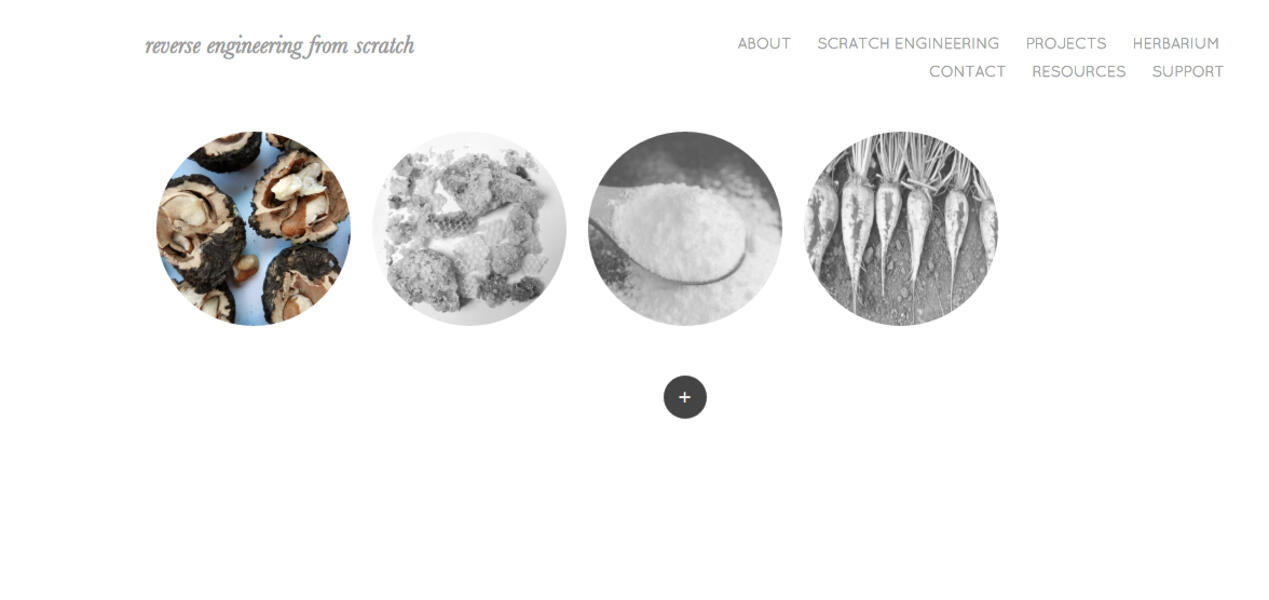 Reverse Engineering from ScratchScreen shot of the blog- live, but not viewable online yet.
Reverse Engineering from ScratchScreen shot of the blog- live, but not viewable online yet. -
 Black Walnut InkWriting materials seemed like another logical early project. So I started with Black Walnut ink because I have a black walnut tree. I researched a ton about gall ink too, but as of yet haven't been able to find any oak galls. I dehusked the walnuts, dried them and then simmered them in some water for a few hours. A few months later I strained the liquid (cheesecloth again... or a sieve?) into a glass jar and added a bit of rubbing alcohol to stop it from getting stinky. So the list of things used in this process: a hammer, a vessel, heat source, glass, a sieve, alcohol, a pen, paper.
Black Walnut InkWriting materials seemed like another logical early project. So I started with Black Walnut ink because I have a black walnut tree. I researched a ton about gall ink too, but as of yet haven't been able to find any oak galls. I dehusked the walnuts, dried them and then simmered them in some water for a few hours. A few months later I strained the liquid (cheesecloth again... or a sieve?) into a glass jar and added a bit of rubbing alcohol to stop it from getting stinky. So the list of things used in this process: a hammer, a vessel, heat source, glass, a sieve, alcohol, a pen, paper. -
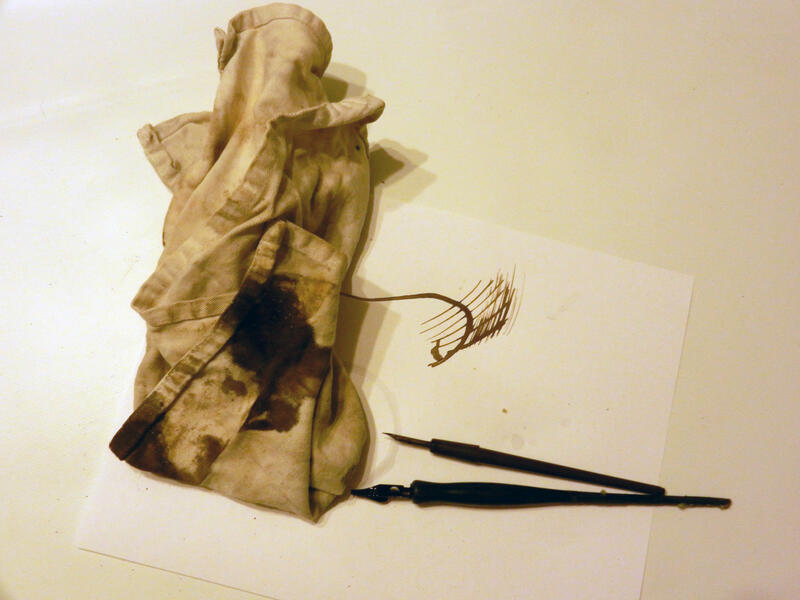 ink and pensink and pens
ink and pensink and pens -
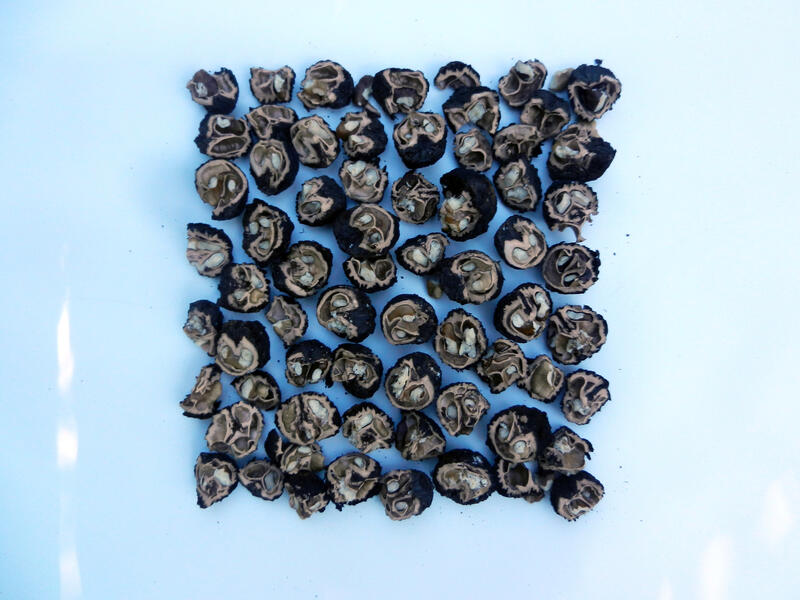 Black Walnutsnuts after cracking
Black Walnutsnuts after cracking
Drawings
-
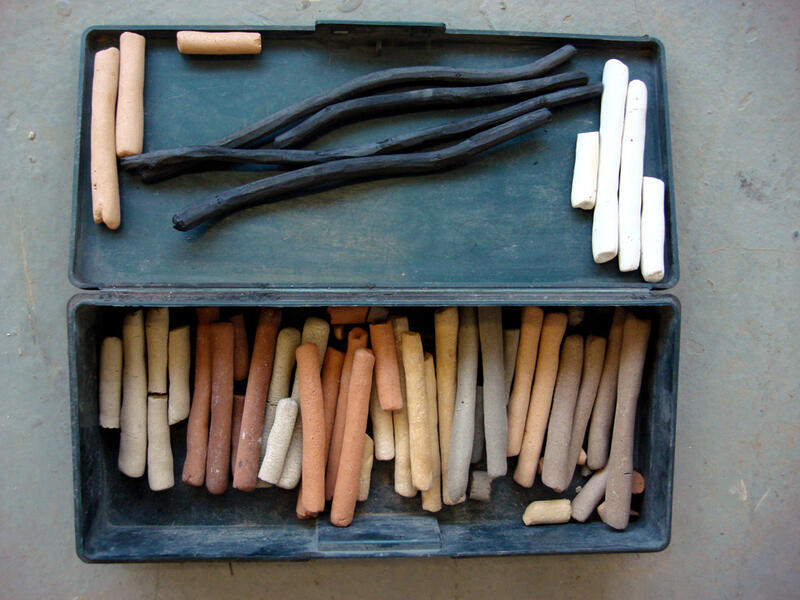 Handmade Soil Pastels2007-2010, pastels handmade from soil
Handmade Soil Pastels2007-2010, pastels handmade from soil -
 Dirt Drawing2009, handmade soil on paper, 5x5 ft.
Dirt Drawing2009, handmade soil on paper, 5x5 ft. -
 Dirt Drawing2009, handmade soil on paper, 5x5 ft.
Dirt Drawing2009, handmade soil on paper, 5x5 ft. -
 Handmade Charcoal2007-2010, handmade charcoal crafted from: Fagus sylvatica, Acer sacharum, Ulmus rubra, Fraxinus Americana, Picea alpestris, Pinus densiflora, Corylus avellana, Betula nigra, Salix matsudana, Taxus baccata, Pinus strobes, Cedrus libani, Sequoia sempervirens, Tsuga Canadensis, Quercus alba, dimensions variable
Handmade Charcoal2007-2010, handmade charcoal crafted from: Fagus sylvatica, Acer sacharum, Ulmus rubra, Fraxinus Americana, Picea alpestris, Pinus densiflora, Corylus avellana, Betula nigra, Salix matsudana, Taxus baccata, Pinus strobes, Cedrus libani, Sequoia sempervirens, Tsuga Canadensis, Quercus alba, dimensions variable -
 Handmade Charcoaldetail
Handmade Charcoaldetail -
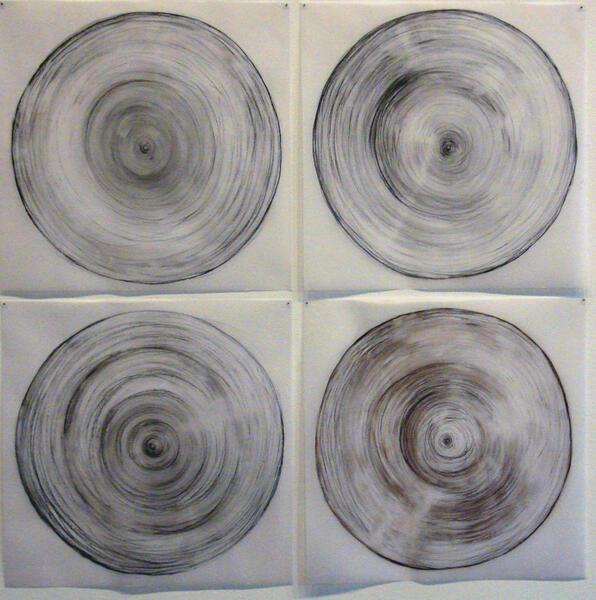 Annual Rings II2009, handmade charcoal on vellum, 4x4 ft.
Annual Rings II2009, handmade charcoal on vellum, 4x4 ft. -
 Annual Rings2008, handmade charcoal crafted from: Fagus sylvatica, Acer sacharum, Ulmus rubra, Fraxinus Americana, Picea alpestris, Pinus densiflora, Corylus avellana, Betula nigra, Salix matsudana, Taxus baccata, Pinus strobes, Cedrus libani, Sequoia sempervirens, Tsuga Canadensis, Quercus alba on vellum, 4x5 ft.
Annual Rings2008, handmade charcoal crafted from: Fagus sylvatica, Acer sacharum, Ulmus rubra, Fraxinus Americana, Picea alpestris, Pinus densiflora, Corylus avellana, Betula nigra, Salix matsudana, Taxus baccata, Pinus strobes, Cedrus libani, Sequoia sempervirens, Tsuga Canadensis, Quercus alba on vellum, 4x5 ft.
Sculpture and Installation
Slow craft/slow art is an important facet of my work. It is similar to the concept behind slow food: making things by hand, knowing the source of the materials you use, how they are made, and valuing the skill of the maker. I delight in making art materials from scratch; I make my own paint, pastels, and charcoal. I prefer to use materials that are often overlooked and undervalued such as soil, found wood and weeds.
My approach to artwork begins with extensive research. I collect all of the historical, folkloric and cultural information I can find relating to my materials and concept. This information informs the artwork. I enjoy site-specific work where, not only is the artwork physically affected by its location, but so is its conceptual content.
Having worked with soil for over ten years, it is natural that I have become interested in soil science and geochemistry. I have begun testing soil and have become intrigued with the mineral content of soil. My dirt collection sprang from an interest in rock and soil as a source of historical pigment, which has a rich cultural and spiritual history. Red pigments and their traditional association with blood have been of particular interest to me. (Adam means â??man of red earthâ?? in ancient Hebrew.) Both blood and soil get their color from oxidized iron, and due to chronic illness, I am iron deficient. I had been drawn to red soil for years, subconsciously compensating by seeking the mineral that my body lacked in the soil. I have recently begun investigating geophagia, the compulsion to eat dirt. This is a condition thought to affect primarily women, and for the first time is being seriously researched by geochemists at Arizona State University. Soil contains important minerals and anti-diarrheal agents (kaopectate is soil derived.)
Spirituality is another important aspect of my artwork. Repetition and meditative process are unifying threads throughout my work. I am interested in Buddhist mandala forms, both for the meditative tasks involved in making them, and because I am interested in creating healing spaces. Artwork and architecture that promote healing are of particular interest to me. I am also attracted to the Native American practice of making healing sand paintings. Both use ephemeral media to create healing spaces. Ephemerality is a key component in my artwork. I am interested in religious rituals and traditions. My work is also spiritual in less defined ways; I try to create quiet, almost altar-like spaces that express my reverence for materials and nature. I love the silence and quality of light inside old churches; the space itself seems awe-inspiring. This is something I strive to recreate in my own work.
The study of alchemy has informed my work as well. I like the way it mixes spirituality and science and has a mysterious air about it. It involves research and strange organizational systems and the search for a panaceaâ??the cure all medicine.
My interest in soil and environmentalism have led me to investigate green architecture. I am fascinated by earthen plaster buildings and vernacular architecture all over the world. My site- specific work responds to architecture, so it follows that I am now interested in architecture itself. Interestingly, there is a renewed interest in creating healing environments and sacred spaces within architecture. Green roofs and plants that renew their environment are components of the green architecture movement that appeal to me, as herbalism and healing plants have long been an interest of mine.
Artwork is often a reflection of self, and mine is no different. My work is deeply personal, but at the same time it touches on many larger issues. I am drawn to floor work because of an obsessive need for grounding and stability. There is an undeniable reliance on gravity in my work. My poor health manifests itself in my attraction to healing environments and mandalas, as well as my more scientific interests. Less evident is my dependence on boundaries and barriers; as I essentially close off large sections off floor space for my installations. These works are almost always self referential, so I am closing myself off from other people. I consider myself a feminist and that appears in my work in an abstract way. Soil, fertility, iron, geophagia and growth are all traditionally associated with the feminine. I borrow an aesthetic similar to that of minimalism, but I completely disregard the lack of conceptual content associated with that philosophy. Instead, my work is infused with personal stories and emotional baggage, in a sense feminizing a traditional minimalist view.
-
 Barren2010, soil, sand, vegetable seeds, salt, dimensions variable This piece utilizes green building techniques. Whereas previous pieces have been designed to use their living material to grow and change this piece is topped with bricks made of salt. Barren draws a connection between the salted fields of medieval conflicts and the increasing salinity of overworked contemporary farmland.
Barren2010, soil, sand, vegetable seeds, salt, dimensions variable This piece utilizes green building techniques. Whereas previous pieces have been designed to use their living material to grow and change this piece is topped with bricks made of salt. Barren draws a connection between the salted fields of medieval conflicts and the increasing salinity of overworked contemporary farmland. -
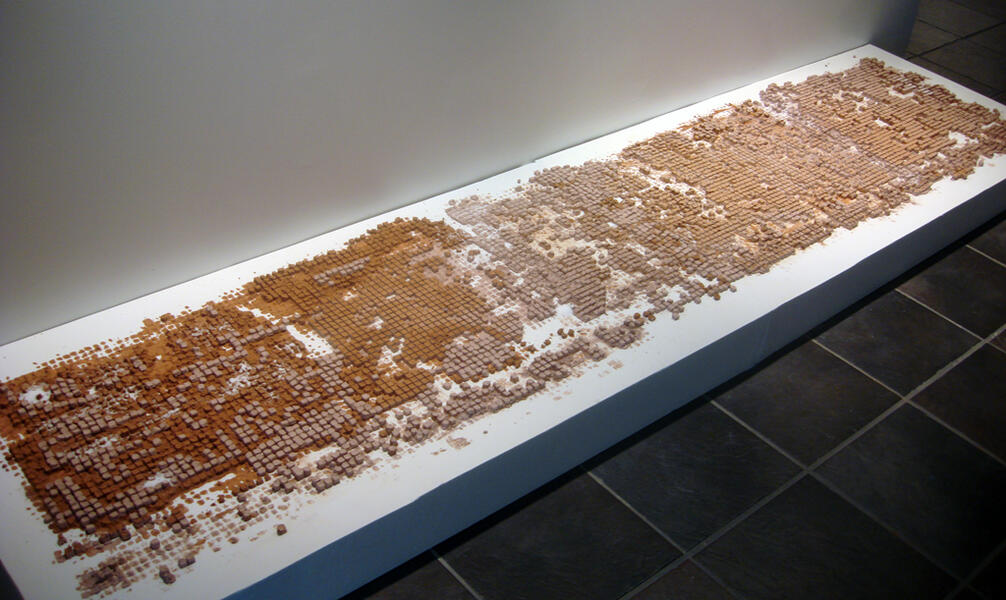 Barren II2010, soil, sand, vegetable seeds, salt, dimensions variable This piece utilizes green building techniques. Whereas previous pieces have been designed to use their living material to grow and change this piece is topped with salt. Barren draws a connection between the salted fields of medieval conflicts and the increasing salinity of overworked contemporary farmland.
Barren II2010, soil, sand, vegetable seeds, salt, dimensions variable This piece utilizes green building techniques. Whereas previous pieces have been designed to use their living material to grow and change this piece is topped with salt. Barren draws a connection between the salted fields of medieval conflicts and the increasing salinity of overworked contemporary farmland. -
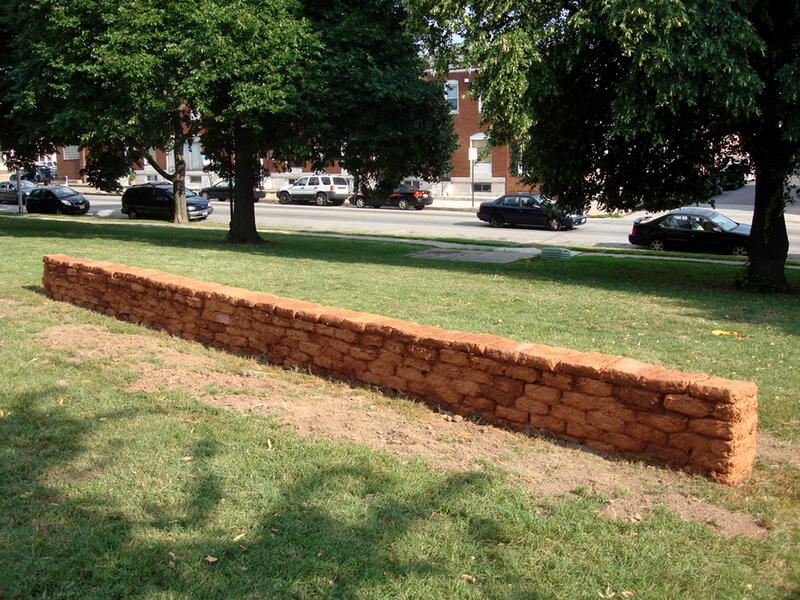 Growth & Decay2008, soil, sand, straw, native Maryland wildflower seeds, 2x30x1 ft. This piece is installed outside and as it rains it will erode. The top layer of bricks is seeded and will bloom, eventually returning to the ground after the wall decays.
Growth & Decay2008, soil, sand, straw, native Maryland wildflower seeds, 2x30x1 ft. This piece is installed outside and as it rains it will erode. The top layer of bricks is seeded and will bloom, eventually returning to the ground after the wall decays. -
 Growth & Decaydetail of wall sprouting
Growth & Decaydetail of wall sprouting -
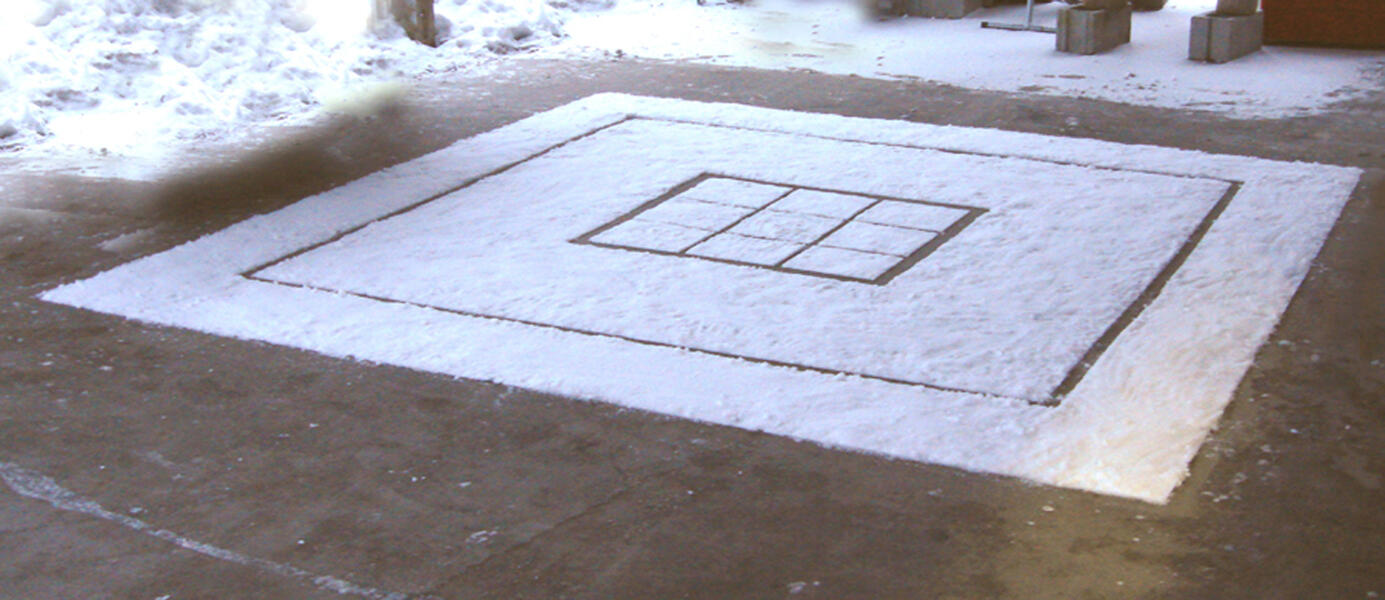 Snow Drawing2008, snow, 10x10 ft. Loosely based on Buddhist and Native American traditions where an ill person sits on the drawing and it absorbs their sickness and is then destroyed taking the sickness with it. In this piece the sickness melts away.
Snow Drawing2008, snow, 10x10 ft. Loosely based on Buddhist and Native American traditions where an ill person sits on the drawing and it absorbs their sickness and is then destroyed taking the sickness with it. In this piece the sickness melts away. -
 Rusted Dirt Floor2007, sifted soil, iron content 356fe removed with magnets, 15x15 ft. The iron content of this soil is high enough that it sticks to a magnet. In contrast I am tremendously iron deficient.
Rusted Dirt Floor2007, sifted soil, iron content 356fe removed with magnets, 15x15 ft. The iron content of this soil is high enough that it sticks to a magnet. In contrast I am tremendously iron deficient. -
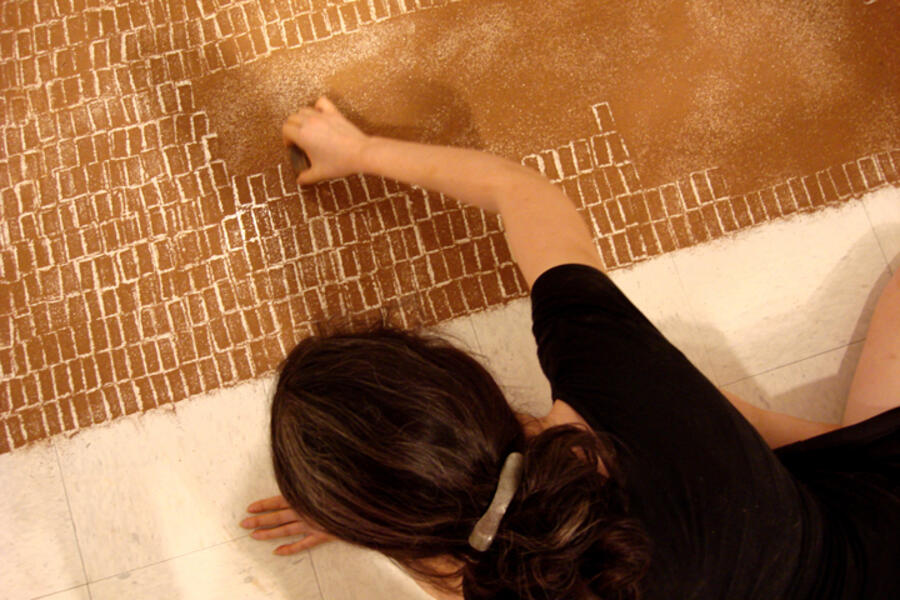 Rused Dirt Floordetail of soil removal
Rused Dirt Floordetail of soil removal -
 Zea Mays2010, native north american corn, dimensions variable This piece references native american traditions as well the kolam of India; prayer drawings made with flour outside of the home. The USâ??s obsession with genetically modified corn products are also of interest.
Zea Mays2010, native north american corn, dimensions variable This piece references native american traditions as well the kolam of India; prayer drawings made with flour outside of the home. The USâ??s obsession with genetically modified corn products are also of interest. -
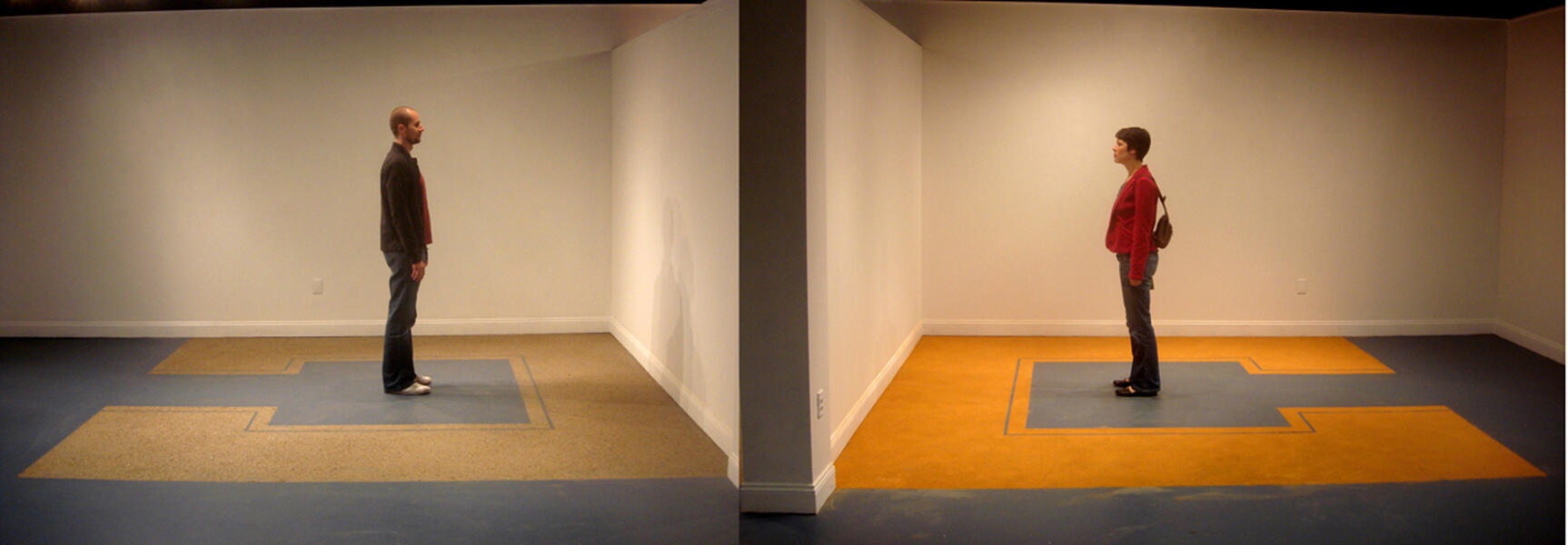 Dirt Shrines2009, sifted soil and mica, 12x36 ft.
Dirt Shrines2009, sifted soil and mica, 12x36 ft. -
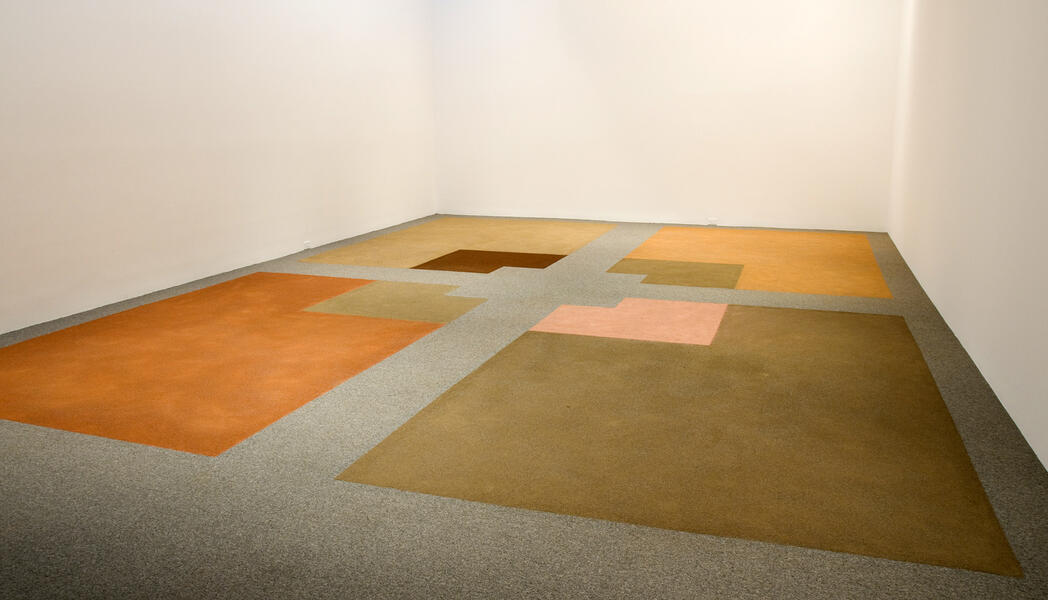 Grounding II2009, sifted soil, 20x30 ft.
Grounding II2009, sifted soil, 20x30 ft.
Sculpture and Installation II
-
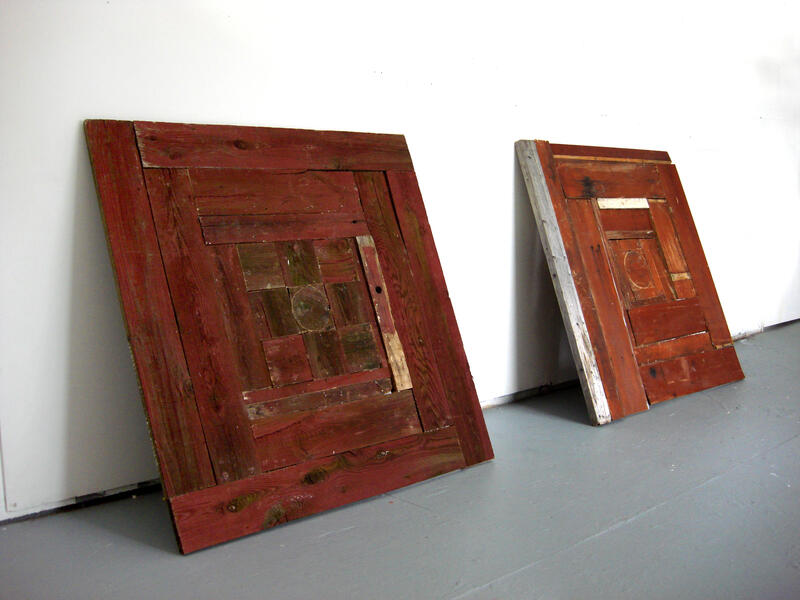 Barnwood Mandala2008, found wood collected in Johnson, VT (installed in Johnson, VT), two 4x4 ft. pieces
Barnwood Mandala2008, found wood collected in Johnson, VT (installed in Johnson, VT), two 4x4 ft. pieces -
 Dirt Shrine IVsoil, corn, mica, 25 x 20 ft.
Dirt Shrine IVsoil, corn, mica, 25 x 20 ft. -
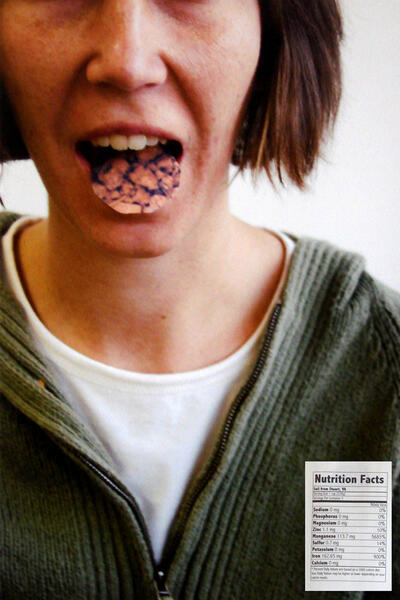 Geopahgiaphoto of performance with edible printed images, nutrition labels, 24x36 in.
Geopahgiaphoto of performance with edible printed images, nutrition labels, 24x36 in. -
 Dirt Flooorsifted soil and mica, 11x11 ft.
Dirt Flooorsifted soil and mica, 11x11 ft. -
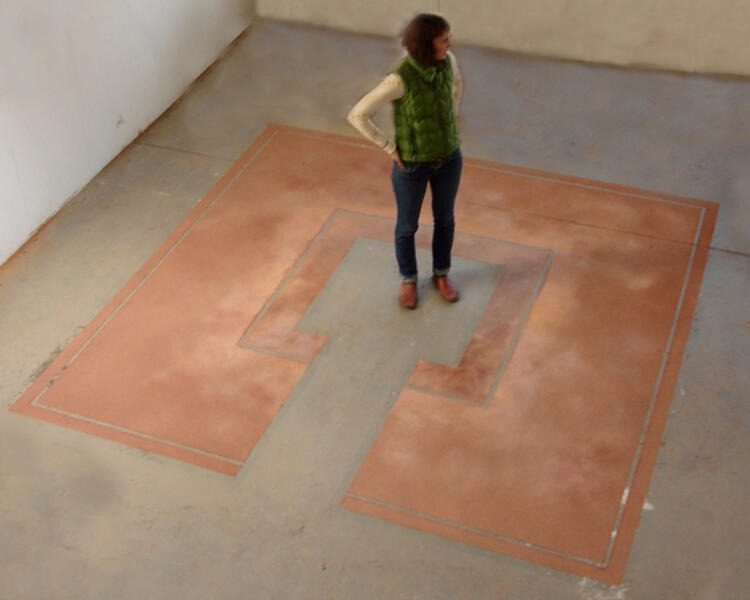 Dirt Shrine2008, sifted soil, 15x15 ft.
Dirt Shrine2008, sifted soil, 15x15 ft. -
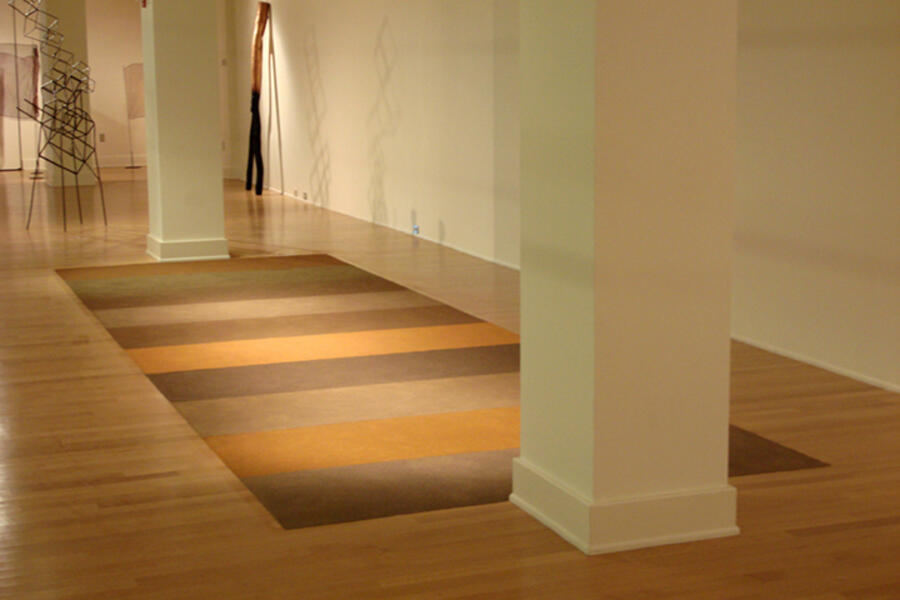 Dirt Floor IV2007, sifted soil from Justin, Heidi, Naomi, Lacey, Maren, Rachel, Angela, Champ, Blake & Meg, 22x7 ft.
Dirt Floor IV2007, sifted soil from Justin, Heidi, Naomi, Lacey, Maren, Rachel, Angela, Champ, Blake & Meg, 22x7 ft. -
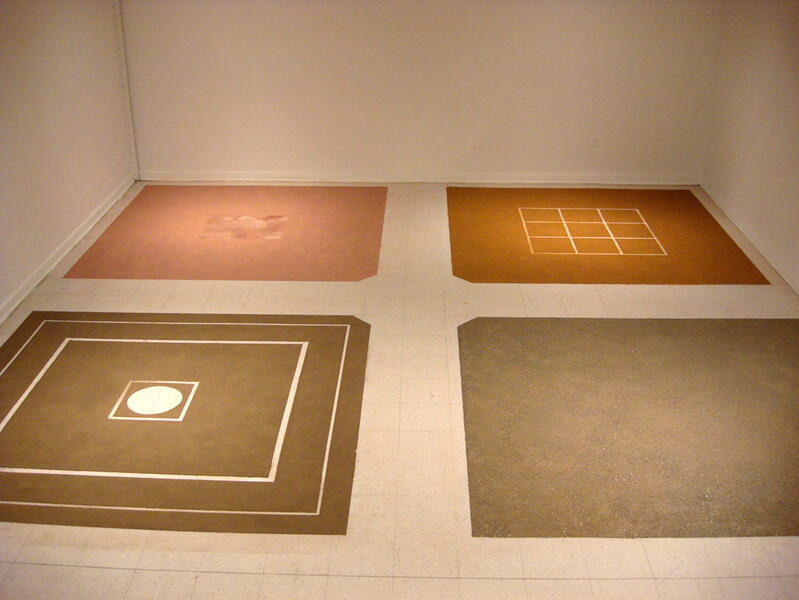 Grounding2008, sifted soil and mica, 20x20 ft. Piece is designed to create a healing environment based loosely on the Buddhist healing mandala and Navajo healing sand paintings.
Grounding2008, sifted soil and mica, 20x20 ft. Piece is designed to create a healing environment based loosely on the Buddhist healing mandala and Navajo healing sand paintings. -
 Maple Resin2008, maple sap collected from two maple trees, dimensions variable
Maple Resin2008, maple sap collected from two maple trees, dimensions variable -
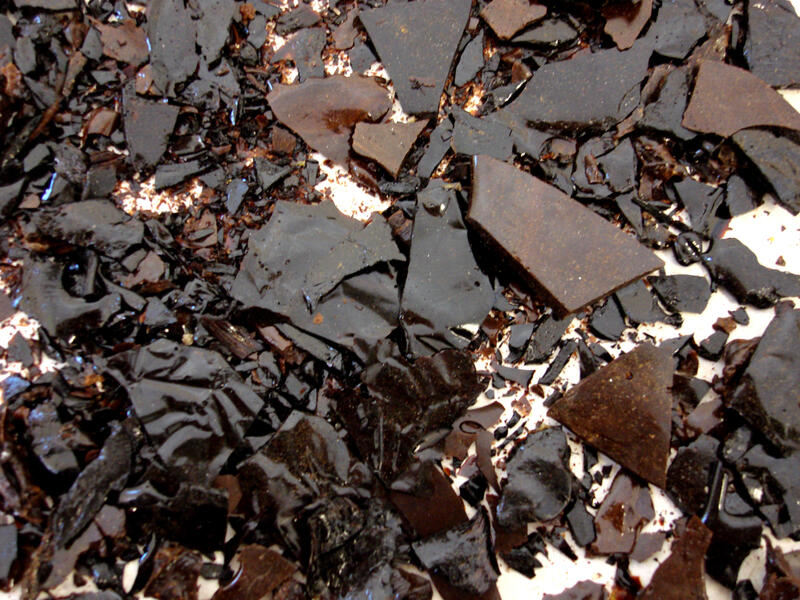 Maple Resindetail of finished resin
Maple Resindetail of finished resin



